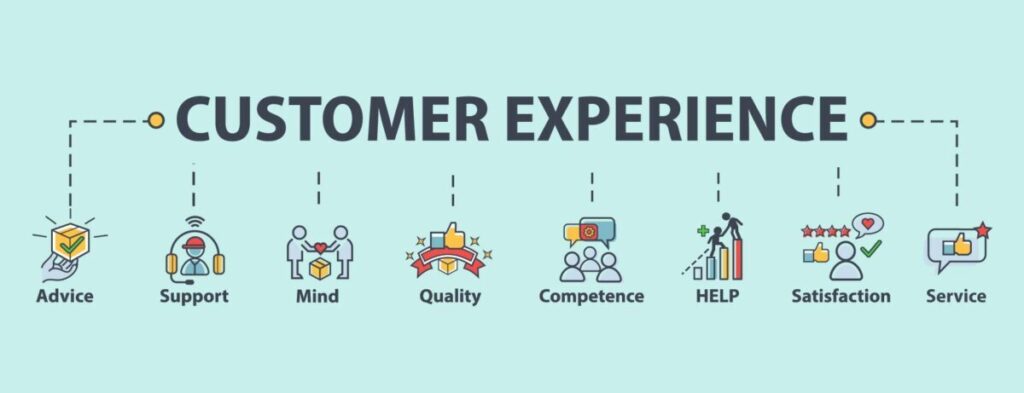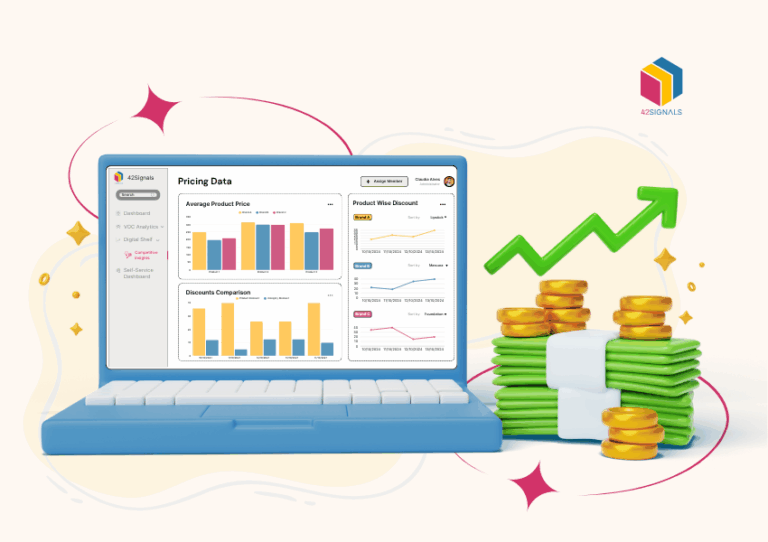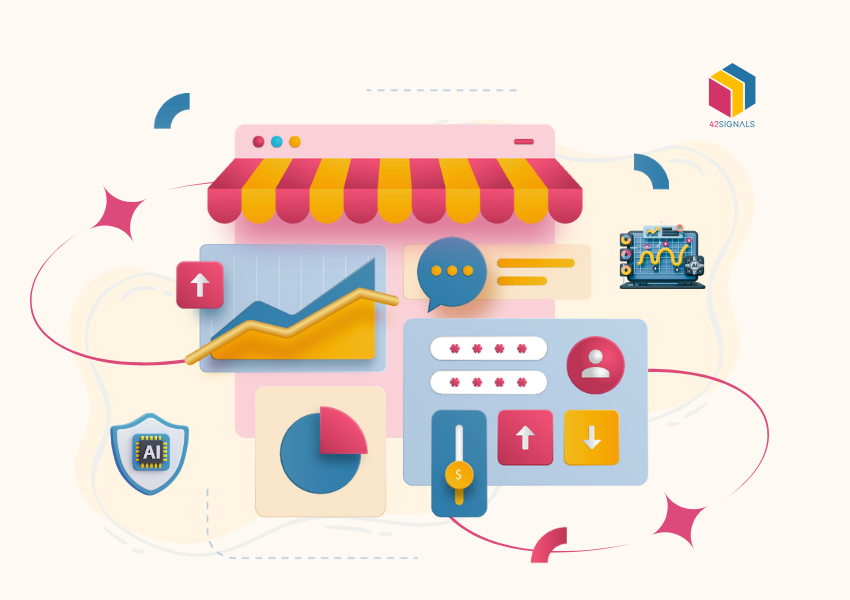Table of Contents
ToggleIn eCommerce, consumer insights are invaluable for shaping effective marketing and sales strategies. Understanding consumer behavior, preferences, and trends can empower businesses to make informed decisions, optimize their operations, and achieve their sales targets.
Let’s explore how ecommerce businesses can harness customer insights, with voice of customer analytics to drive their marketing and sales strategies.
Understanding Consumer Insights

Image Source: Medallia
Consumer insights refer to the deep understanding of customer behaviors, preferences, and motivations that businesses gain through data analysis. This data is often collected from various sources, including website analytics, social media interactions, customer reviews, and purchasing history. By analyzing this data, businesses can uncover patterns and trends that reveal what customers want and how they interact with products and brands.
Sources of Consumer Insights
Understanding the customer is the cornerstone of any successful business strategy. Consumer insights move beyond raw data to provide a deep understanding of customer behaviors, motivations, and unmet needs. These revelations, derived from a variety of sources, empower businesses to make informed decisions, foster innovation, and build lasting customer loyalty. The most effective insights strategies combine quantitative data (the “what”) with qualitative understanding (the “why”). Here are five fundamental sources of consumer insights.
1. Website Analytics
Tools like Google Analytics provide a wealth of quantitative data on user behavior, such as page views, bounce rates, session duration, and conversion paths. This data is invaluable for understanding how visitors interact with a website in real-time. For instance, a high bounce rate on a key landing page signals that the content is not meeting visitor expectations, prompting a review of messaging or design. By analyzing conversion paths, businesses can identify friction points in the sales funnel—perhaps a complicated checkout process is causing cart abandonment.
Furthermore, analytics can reveal which content drives the most engagement, informing content strategy and SEO efforts. The true power of website analytics lies in its ability to map the digital customer journey, highlighting opportunities for optimization to enhance user experience and drive key business goals.
2. Social Media Analytics
Platforms like Facebook, Instagram, and Twitter offer built-in analytics tools that go beyond simple “like” counts. These tools reveal critical engagement metrics (shares, comments, saves), detailed audience demographics (age, location, interests), and data on which topics are trending within the brand’s community.
These insights help businesses understand how customers perceive their brand and what content truly resonates. For example, if a video tutorial receives significantly more shares than a product announcement, it indicates that the audience values educational content. Social listening—monitoring brand mentions and relevant keywords—can also uncover unsolicited feedback and emerging trends, providing a real-time pulse on public sentiment and competitive positioning.
3. Customer Reviews and Feedback
Online reviews and feedback provide qualitative data on customer satisfaction, pain points, and product features that are most appreciated. This information is crucial for improving products and customer service.
Analyzing this data systematically can reveal common themes; for instance, multiple reviews praising a product’s durability but criticizing its setup instructions provide a clear roadmap for improvement. This information is crucial not only for refining products and customer service but also for building trust. Responding thoughtfully to reviews demonstrates that a company values customer input, turning a feedback channel into a relationship-building tool.
4. Purchase History with Consumer Insights
A customer’s transaction history is a goldmine of behavioral data. Analyzing this data helps identify concrete buying patterns, such as frequently purchased together items, seasonal spikes in demand, and customer lifetime value (CLV). This information is vital for segmentation, allowing businesses to tailor marketing campaigns with high precision.
For example, a customer who regularly purchases running gear can be segmented into a “fitness enthusiast” group and targeted with relevant new arrivals or complementary products like nutritional supplements. Purchase history also fuels effective loyalty programs and personalized recommendations, creating a more relevant and engaging shopping experience that encourages repeat business.
5. Surveys and Polls
While other sources provide observational data, surveys and polls offer a method for gathering direct, specific feedback on customer preferences, needs, and expectations. The key to effective surveys is asking the right questions to the right audience. Well-designed surveys can fill knowledge gaps that analytics cannot, answering “why” a behavior occurred.
For instance, after noticing a drop in sales, a survey could ask former customers about their reasons for leaving, revealing issues like price sensitivity or a poor customer service experience. Polls on social media are excellent for quick, informal feedback on topics like product preferences or content ideas, fostering a sense of community and co-creation. This direct line of inquiry ensures that business strategies are aligned with actual customer desires.
Using Consumer Insights to Drive Marketing Strategy
Personalization
Personalization has evolved from a novel marketing tactic into a fundamental customer expectation. It is a powerful strategy that involves tailoring content, product recommendations, and offers to individual customers based on their unique preferences, behaviors, and past interactions.
Rather than a one-size-fits-all broadcast, personalization aims to create a one-to-one conversation that makes each customer feel uniquely understood. Customer insights are the fuel for this strategy, enabling businesses to move beyond basic segmentation to deliver truly relevant experiences that resonate on an individual level, thereby fostering loyalty and driving revenue.
Segmenting the Audience
The foundation of effective personalization is sophisticated audience segmentation that comes with consumer insight. By analyzing rich consumer data—including demographics, purchasing history, browsing behavior, and engagement patterns—businesses can move beyond broad categories to create highly specific customer cohorts.
For example, instead of targeting “women aged 25-40,” a brand could identify a segment of “new mothers who have purchased baby gear in the last month and have read articles on postpartum wellness.” This granularity allows for targeted marketing campaigns that speak directly to the nuanced needs and desires of each segment.
Advanced segmentation also enables the identification of high-value customer groups for loyalty programs or at-risk segments for win-back campaigns, ensuring marketing resources are allocated efficiently for maximum impact.
Tailoring Content
With a well-segmented audience, businesses can then tailor content across every touchpoint with consumer insights. Personalized email marketing remains one of the most effective channels; instead of a generic newsletter, subscribers receive content curated based on their interests, such as a roundup of new arrivals in a category they’ve previously browsed or a special offer for their birthday. On a website, dynamic content can display different hero images or promotions based on whether the visitor is a new guest or a returning customer.
Product recommendation engines, powered by algorithms that analyze purchase history and browsing data (e.g., “customers who bought this also bought”), are a direct driver of increased average order value. This level of tailoring transforms the customer experience from a transactional interaction into a curated journey, significantly boosting engagement, conversion rates, and long-term customer loyalty by demonstrating that the brand pays attention and cares about individual customer needs.
Optimizing Customer Experience

Image Source: Aim Technologies
Consumer insights provide the empirical foundation needed to move beyond guesswork and systematically enhance every touchpoint a customer has with a brand. By analyzing data from across the customer journey, businesses can identify friction points, uncover unmet needs, and create a more seamless, intuitive, and satisfying experience. This proactive approach to CX optimization not only increases immediate conversions but also builds long-term customer loyalty and positive word-of-mouth, turning satisfied customers into brand advocates.
Enhancing Website Usability
A company’s website is often its digital storefront, and its usability directly impacts brand perception and conversion rates. Website analytics offer a treasure trove of data that reveals how users actually interact with the site, not just how designers intended them to. For instance, a high bounce rate on a specific page indicates that visitors are leaving without engaging, signaling a potential issue with page load speed, confusing layout, or irrelevant content.
Similarly, analyzing heatmaps and scroll depth can show where users are clicking and how far they are reading, highlighting which elements capture attention and which are ignored. By identifying pages with low conversion rates, businesses can conduct A/B testing on key elements like call-to-action (CTA) buttons, headlines, and forms. This data-driven approach to optimization ensures that website design evolves based on actual user behavior, leading to a more intuitive and efficient browsing experience that guides visitors effortlessly toward their goals.
Streamlining the Checkout Process
The checkout process is a critical moment of truth in the e-commerce journey, and even minor friction can lead to significant cart abandonment. Insights derived from analytics funnel reports are invaluable for pinpointing exactly where potential customers drop off. A common obstacle is a lengthy or complicated form; requiring account creation before purchase is a frequent point of abandonment. Simplifying this process by offering a guest checkout option and auto-filling fields where possible can dramatically reduce friction. Furthermore, analytics might reveal that customers abandon their carts after seeing shipping costs.
Addressing this by providing clear shipping information upfront, offering multiple payment options (including digital wallets like Apple Pay or PayPal for speed), and implementing a progress indicator to show how many steps are left can create a sense of transparency and control. By meticulously refining the checkout flow based on these behavioral insights, businesses can recover lost sales and ensure that a customer’s decision to buy is met with a effortless, secure, and positive final interaction.
Improving Customer Support
Customer support is no longer just a reactive function for solving problems; it is a pivotal opportunity to strengthen relationships and build loyalty. Feedback from customer reviews, support tickets, and post-interaction surveys provides a direct line to the customer’s pain points and frustrations. Analyzing this qualitative data can reveal common themes—perhaps a specific product feature is consistently misunderstood, or shipping delays are a frequent complaint.
Addressing the root cause of these issues, such as creating clearer product documentation or revising shipping partner agreements, is the first step. Furthermore, these insights can be used to improve the support experience itself. For example, if data shows many customers contact support for password resets, implementing a robust self-service password recovery tool can resolve the issue instantly for the customer and reduce the ticket volume for the support team. By leveraging insights to create proactive solutions, knowledge bases, and targeted training for support agents, businesses can transform customer support from a cost center into a strategic asset that enhances overall satisfaction and loyalty.
Crafting Effective Messaging
Understanding consumer motivations and preferences allows businesses to craft compelling messaging that resonates with their target audience.
Aligning with Customer Values
Insights into customer values and beliefs can guide businesses in developing messaging that aligns with their audience’s priorities. For example, if a significant portion of the audience values sustainability, highlighting eco-friendly practices can strengthen brand loyalty.
Emphasizing Unique Selling Points (USPs)
Consumer insights can reveal which product features or benefits are most valued by customers. Businesses can emphasize these USPs in their messaging to differentiate themselves from competitors and attract potential customers.
Using Consumer Insights to Drive Sales Strategy
Product Development and Innovation
Consumer insights play a crucial role in guiding product development and innovation. By understanding customer needs and preferences, businesses can create products that meet market demands.
Identifying Market Gaps
Insights from customer feedback and market trends can reveal unmet needs and opportunities for new products. Businesses can leverage this information to develop innovative solutions that address customer pain points.
Enhancing Product Features
Analyzing customer reviews and feedback can provide valuable insights into product features that customers love or dislike. This information can guide product improvements and updates to enhance customer satisfaction.
Pricing Strategy
Pricing is a critical factor in the purchasing decision. Customer insights can inform pricing strategies that maximize profitability while remaining competitive.
Understanding Price Sensitivity
By analyzing purchasing behavior and feedback, businesses can gauge how sensitive customers are to price changes. This information can guide pricing decisions, such as offering discounts or adjusting prices based on demand.
Competitive Analysis
Consumer insights can reveal how customers perceive competitors’ pricing and products. Businesses can use this information to position their products strategically and offer value propositions that set them apart.
Sales Channel Optimization
Understanding where and how customers prefer to shop can help businesses optimize their sales channels for maximum reach and convenience.
Identifying Preferred Channels
Customer insights can reveal which channels customers prefer, such as online marketplaces, social media, or physical stores. Businesses can focus their efforts on these channels to reach their target audience effectively.
Omnichannel Strategy
By analyzing customer interactions across different channels, businesses can develop an omnichannel strategy that provides a seamless shopping experience. This approach ensures consistency in branding and messaging, regardless of where customers choose to engage.
Conclusion
Consumer insights empower businesses to make data-driven decisions that enhance customer satisfaction, increase engagement, and ultimately drive sales growth.
It’s such an integral part of creating a well-developed product line that has a large and loyal customer base.
Frequently Asked Questions
1. What do you mean by consumer insight?
A consumer insight is a deep understanding of what motivates customer behavior—why they buy, how they feel, and what influences their decisions. It goes beyond surface-level data and uncovers the emotional or psychological triggers that shape buying habits.
For example, knowing that customers prefer eco-friendly packaging is data. But learning that they choose those products because it makes them feel like responsible parents—that’s a consumer insight.
2. How to find a consumer insight?
Finding valuable consumer insights involves combining qualitative and quantitative research with contextual interpretation. Here’s how:
- Collect Data: Use surveys, interviews, social listening, purchase history, reviews, or web analytics to gather customer information.
- Observe Behavior: Look at how customers interact with your product, brand, or competitors. Tools like heatmaps, customer journey maps, and usability tests can help.
- Identify Patterns: Analyze the data to uncover trends, frustrations, preferences, or emotional reactions that repeat across segments.
- Ask “Why?”: Go beyond what people say and do—try to understand the motivations and values behind their choices.
- Validate: Test your insight through small experiments, A/B tests, or further research to ensure it’s actionable and accurate.
Great insights are relevant, surprising, and useful—they lead to new ideas, better messaging, or smarter product strategies.
3. How to write a good consumer insight?
A well-crafted consumer insight should be clear, emotional, and actionable. It often follows this format:
“Consumers [do X or feel Y] because [underlying motivation], but they wish [ideal outcome or unmet need].”
Tips for writing strong insights:
- Focus on emotion, not just behavior.
- Use simple, human language.
- Address a tension or unmet need.
- Connect the insight to a specific business opportunity.
Example:
“Working mothers feel guilty about spending less time with their kids, but wish they had small, meaningful ways to stay connected throughout the day.”
This kind of insight can inspire campaigns, product design, or loyalty strategies.
4. What is a consumer insights job?
A Consumer Insights Specialist or Analyst is a professional who helps businesses understand their customers at a deeper level. Their role includes:
- Conducting and managing research (surveys, focus groups, data analysis).
- Turning raw data into meaningful insights and reports.
- Collaborating with product, marketing, and UX teams to apply those insights.
- Monitoring market trends and competitor behavior.
- Helping brands predict what customers will want next and why.
It’s a cross-functional role that blends research, psychology, data analysis, and storytelling—bridging the gap between data and decision-making.





